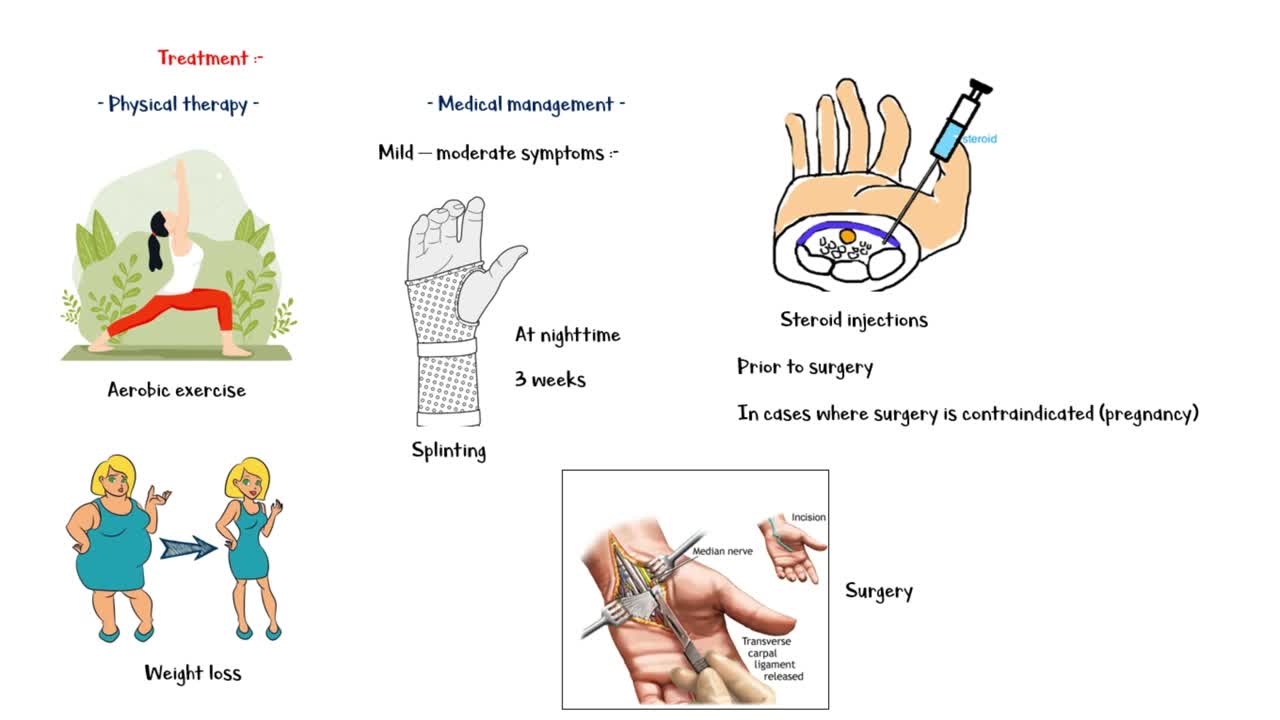Premium Only Content

Carpal Tunnel Syndrome _- Causes, Clinical Presentation, Pathophysiology, Diagnosis & Treatment
Carpal tunnel syndrome is a collection of characteristic signs and symptoms, that occur following compression of the median nerve within the carpal tunnel. The median nerve is damaged within the rigid confines of the carpal tunnel, initially undergoing demyelination, followed by axonal degeneration. Sensory fibers are affected first, followed by motor fibers. The exact mechanism of this damage is not well established. However, it seems likely that abnormally high carpal tunnel pressure causes obstruction of venous outflow, with resultant edema formation, ultimately leading to nerve ischemia.
Carpal tunnel syndrome is not fatal. However, it can lead to complete, irreversible median nerve damage with consequent severe loss of hand function if left untreated. Whites are at a higher risk of developing carpal tunnel syndrome. The peak age range for the disease is between 45 to 60 years, and about 10% of cases are reported in people aged less than 31 years. Females are commonly affected than men, with a ratio of 3 to 10 in females to 1 in males.
#CarpalTunnelSyndrome #CarpalTunnelSyndromeTreatment #MedToday
-
 LIVE
LIVE
vivafrei
5 hours agoProsecuted for Failed Maduro Coup? Live with Former Green Beret Jordan Goudreau! Viva Frei
2,068 watching -
 LIVE
LIVE
The Charlie Kirk Show
1 hour agoBreak the Bureaucracy + Trump's Shock And Awe + Super Bowl Thoughts | Sen. Scott, Sen. Lee | 2.10
10,350 watching -
 1:00:36
1:00:36
The Dan Bongino Show
3 hours agoFollowing The Money In This Growing Scandal (Ep. 2419) - 02/10/2025
509K925 -
 LIVE
LIVE
Nerdrotic
16 hours agoNerdrotic Nooner 463
1,494 watching -
 LIVE
LIVE
Grant Stinchfield
1 hour agoThe Democrats are Now Openly Calling for Violence and Impeachment of Trump
537 watching -
 LIVE
LIVE
The Dana Show with Dana Loesch
1 hour agoThe Dana Show LIVE On Rumble! | 02-10-25
960 watching -
 1:08:29
1:08:29
The Rubin Report
2 hours ago'Real Time' Crowd Roars for Bill Maher’s Brutal Message to Democrats
42.3K56 -
 1:45:36
1:45:36
Benny Johnson
2 hours agoMassive Illegal FEMA Fraud EXPOSED, Feds FREAK! Trump TORCHES Taylor Swift in Super Bowl Humiliation
44.6K109 -
 DVR
DVR
Bannons War Room
1 year agoWarRoom Live
113M -
 2:04:00
2:04:00
Steven Crowder
4 hours ago🔴 How Donald Trump Murdered Cancel Culture at the Super Bowl
380K277